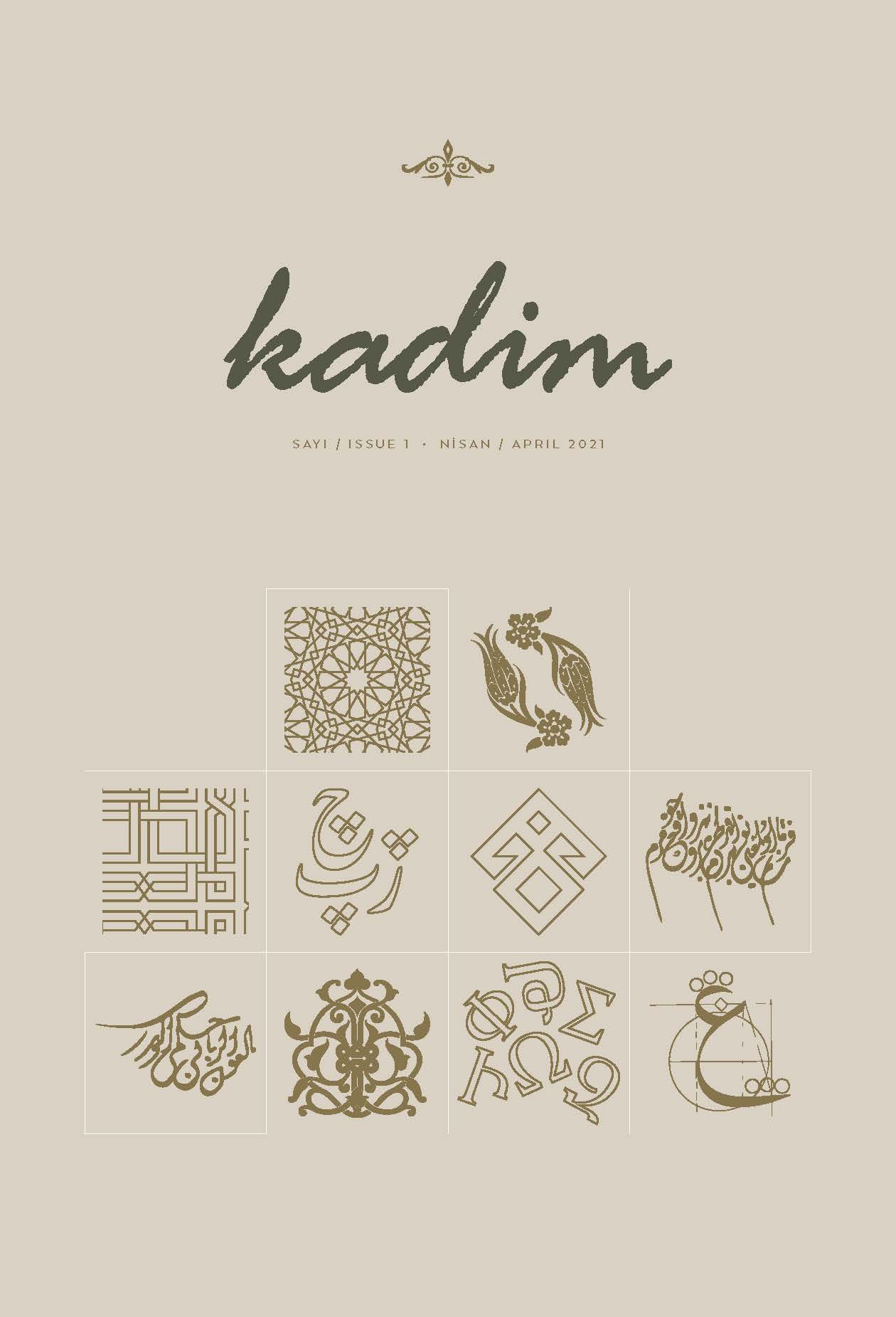Kuzey Yunanistan’da Osmanlı Ticaret Ağının İzini Sürmek
Osmanlı İmparatorluğu, Ticaret Ağları, Ticari Binalar, Kuzey Yunanistan, Kültürel Miras
Tracing the Ottoman Trade Network in North Greece
Ottoman Empire, Trade Networks, Trade Buldings, North Greece, Heritage,
___
- A Balkan Tale (guidebook) – www.balkantale.com. Accessed in September 14, 2015.
- Acun, Fatma. “A portrait of the Ottoman Cities”. The Muslim World 92 (Fall 2002), 255-281.
- Ayşil, Tükel Yavuz. “The concepts that shape Anatolian Seljuk caravanserais”. Muqarnas XIV, Leiden: E. J. Brill, 1997, 80-95.
- Castellan, George. Ιστορία των Βαλκανίων. μετ. Αλιφέρη, Βασιλική, Γκοβόστης. 1991.
- Cezar, Mustafa. Typical Commercial Buildings of the Ottoman Classical Period and the Ottoman Construction System. Istanbul: Türkiye İş Bankası Cultural Publications, 1983.
- Demetriades, Vassilis. “Vakifs along the Via Egnatia”. The Via Egnatia under Ottoman Rule (1380-1699). Symposium: Halcyon Days in Crete II. ed. Elizabeth Zachariadou. Rethymnon: Institute for Mediterranean Studies, Crete University Press, 1996.
- Faroqhi, Suraiya. “Urban development in Ottoman Anatolia (16.-17. centuries)”. M.E.T.U. Journal of the Faculty of Architecture 7/1 (Spring 1981), 35-51.
- Heywood, Colin. “The Menzilhanes of the Sol Kol in the late 17th/early 18th century”. The Via Egnatia under Ottoman Rule (1380-1699): Symposium: Halcyon Days in Crete II. ed. Elizabeth Zachariadou. Rethymnon: Institute for Mediterranean Studies, Crete University Press, 1996.
- Lalenis, Konstantinos - Samourkasidou, Elena. “Wakfs in Kavala, Greece: A legal, Political and Architectural Heritage Issue”. Archnet-IJAR 7/2 (July 2013), 206-220.
- Murphey, Rhoads. “Patterns of trade along the via Egnatia”. The Via Egnatia under Ottoman Rule (1380-1699): Symposium: Halcyon Days in Crete II. ed. Elizabeth Zachariadou. Rethymnon: Institute for Mediterranean Studies, Crete University Press, 1996.
- Saoud, Rabah. “Introduction to the Islamic city”. Foundation for Science Technology and Civilization (August 2002), Pub.ID:4012.
- Saoud, Rabah. “Muslim Architecture under Ottoman Patronage (1326-1924)”. Foundation for Science Technology and Civilization (July 2004), Pub. ID: 4064.
- Stoianovich, Traian. “A route type: The Via Egnatia under Ottoman rule”. The Via Egnatia under Ottoman Rule (1380-1699). Symposium: Halcyon Days in Crete II. ed. Elizabeth Zachariadou. Rethymnon: Institute for Mediterranean Studies, Crete University Press, 1996.
- Sugar, Peter F. Southeastern Europe under Ottoman Rule, 1354-1804. Athens: Smili, 1994.
- The Ottoman Monuments of Greece: Their Protection, Conservation and Restoration. ed. Aimilia Stefanidou. Θεσσαλονίκη: University Studio Press, 2010.
- Ανδρούδης, Πασχάλης. Χάνια και Καραβάν-Σεράγια στον Ελλαδικό χώρο και στα Βαλκάνια. Θεσσαλονίκη: Ο.Π.Ε.Π. ΑΕ, 2004.
- Γρηγορίου, Αλέξανδρος. Χάνια, Πανδοχεία, Ξενοδοχεία της Θεσσαλονίκης 1875-1917. University Studio Press, 2003.
- Καλαφατζής, Ιωάννης, Μακροπούλου Δέσποινα - Καραδέδος Γεώργιος. “Η Χάνα στην αρχαία Τραϊανούπολη Πρόταση αποκατάστασης”. Το Αρχαιολογικό Έργο στη Μακεδονία και στη Θράκη 22(2008), 581-588.
- Κανετάκη, Ελένη. Οθωμανικά Λουτρά στον Ελλαδικό Χώρο. Αθήνα: Τ.Ε.Ε., 2004.
- Καρανάτσης, Κωνσταντίνος. “Παρόδιοι σταθμοί και χερσαίες επικοινωνίες στον ορεινό χώρο. Ταξιδεύοντας το 19ο αιώνα”. ΙΑ’ Συμπόσιο Ιστορίας και Τέχνης: Επικοινωνίες και Μεταφορές στην Προβιομηχανική περίοδο. 207-215. Κάστρο Μονεμβασιάς: 23-26 Ιουλίου 1998.
- Λώλος, Γιάννης. Εγνατία Οδός. Αθήνα: Ολκός, 2008.
- Μιχαλοπούλου, Ελένη (επιμ.). Η Οθωμανική αρχιτεκτονική στην Ελλάδα. ΥΠΠΟ, 2009.
- Πανάγου, Κωνσταντίνα. “Διακίνηση βαμβακιού τον 18ο και 19ο αιώνα”. Δρόμοι και Κόμβοι της Βαλκανικής. Θεσσαλονίκη Πολιτιστική Πρωτεύουσα της Ευρώπης (1997), 201-212.
- Σκιαδαρέσης, Γεώργιος. “Τα οθωμανικά μνημεία των Γιαννιτσώνν”. Φίλιππος. Έτος 21/76 (7-9/2012), 28-47.
- Στεφανίδου Αιμιλία. Η πόλη-λιμάνι της Καβάλας κατά την περίοδο της τουρκοκρατίας: πολεοδομική διερεύνηση (1391-1912).
- Διδακτορική Διατριβή. ΑΠΘ-Πολυτεχνική Σχολή/Τμήμα Αρχιτεκτόνων, Θεσσαλονίκη Ιούνιος 1991.
- Τσότσος, Γεώργιος Π. Μακεδονικά Γεφύρια. Θεσσαλονίκη: University Studio Press, 1997.
- ISSN: ISSN 2757-9395 | e-ISSN 2757-9476
- Yayın Aralığı: 2
- Başlangıç: 2021
- Yayıncı: Burhan Çağlar
Erünsal, İsmail E. Yirmi İki Mürekkep Damlası: Osmanlı Sosyal ve Kültür Tarihi Üzerine Sohbetler
Bir Şehir Efsanesinin Tashihi: Bolulu Aşçılar Saray Mutfaklarına Fatih Döneminde Mi Girdi?
Kuzey Yunanistan’da Osmanlı Ticaret Ağının İzini Sürmek
Osmanlı Dönemi Arifesinde İşkodra'daki Zanaatlar (14. – 15. Yüzyıllar)
Don Kazakları'nın Osmanlı Topraklarına Göçü ve İgnat Nekrasov'un Vasiyeti
Târîh-i Âl-i Osmân (Rüstem Paşa Tarihi) Üzerine Notlar
Bosna ve Hersek’te Osmanlı ve Osmanlı Sonrası Sınırlarının Gelişimi
